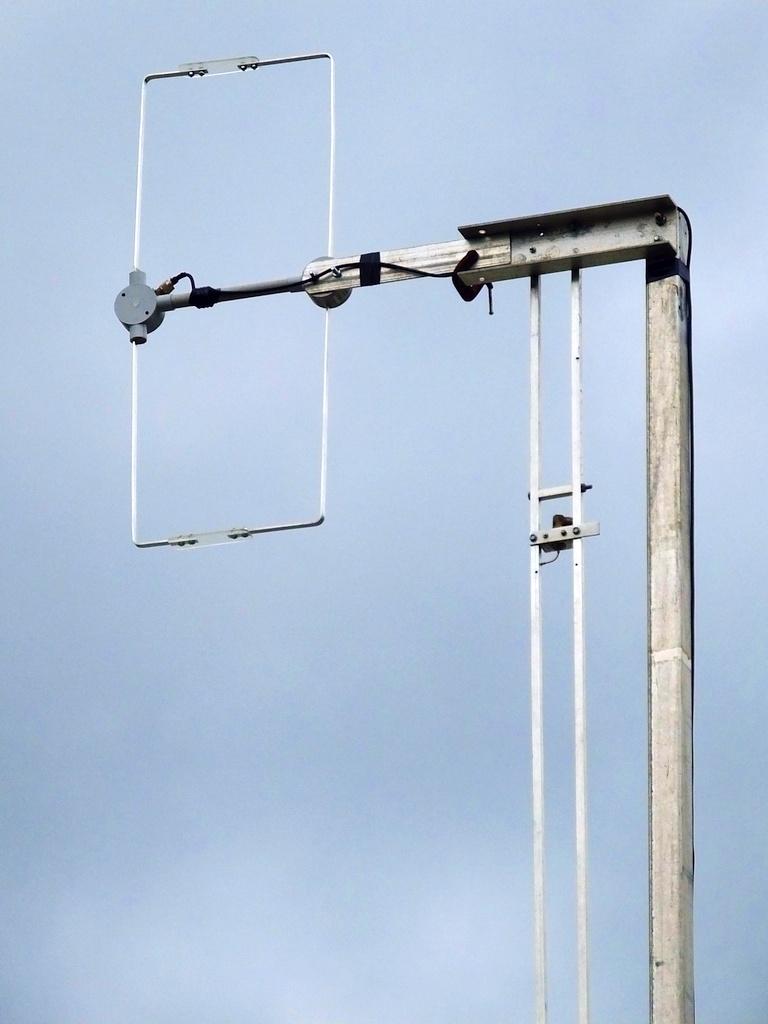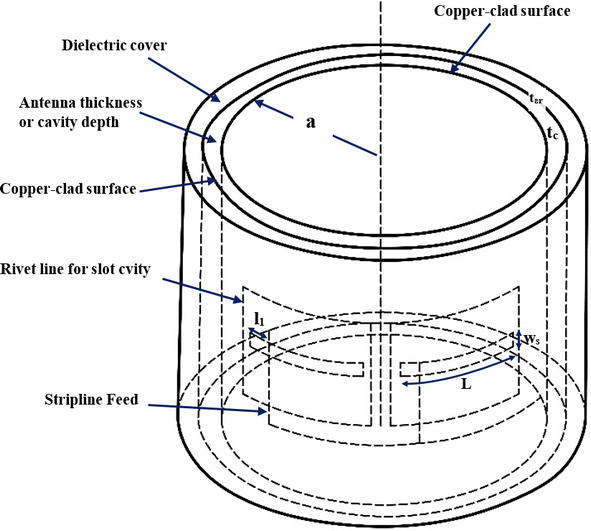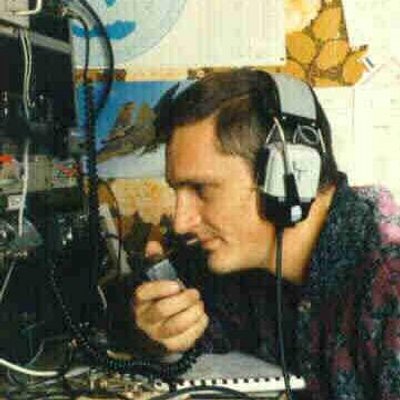THE 2 METER SLIM JIM COPPER TUBING ANTENNA PROJECT BY RICHARD KE5FXU SK (Updated 1-16-2012) (Credit for the original design goes to F.C. QYT KT-780 Plus 100 Watts 2 meter Mobile Radio Review and Demo December 08, 2020 No comments The QYT KT-780 Plus is a 100 watt mobile radio on the 2 meter Amateur Radio Band, and works on FM mode.
HF Skeleton Slot - An antenna system with a difference.
For many years at this QTH I have tried different wire antennas. Not being interested in rotary beams of the usual type, I have always use fixed wire antennas.
Amazon's Choice for 2 meter antenna Dualband Mobile Antenna 2m/70cm VHF/UHF Ham Radio, 137-149, 437-480 Mhz, Magnet Base PL-259 Connector, 10 Ft RG58 Cable 4.4 out of 5 stars 284.
Over the years I came to the conclusion that for my particular purposes I needed something with gain that would work in more than one direction.
In this video, i have explained Slot Antenna by following outlines: 1. Basics of Slot Antenna 3. Structure of Slot Antenna 4. Operation of Sl. The antenna works well but is difficult to rotate. The photograph below shows the antenna installed at my QTH. The top spreader is 50 feet above ground. The bottom about 20 feet above ground level. HF Skeleton slot. The drawing above shows the dimensions of my Skeleton Slot. It can be easily rotated. It is bi-directional.

Having tried vertical beams and phased verticals all hanging from a nylon line, I decided to use the same nylon line to hold up a Lazy H antenna.
The Lazy H works very well of course, Bi-directional, low angle and gain, BUT its a bit too big to rotate to fill in the directions 90° from its broadside line of fire and I don't have the room to put up a second Lazy H.
It was while playing around with this antenna using the MMANA-GAL modeling program that I tried bending the ends of the top dipole down and the ends of the bottom dipole up, still keeping the open wire phasing line between the two dipoles and fed in the center. I eventually ended up with the ends of the dipoles joined together and the horizontal top and bottom parts of the dipoles very much shortened and tried feeding at the junction of the dipole ends, getting rid of the phasing line between the two dipoles.
This arrangement now reminded me of the VHF skeleton slot antenna that I had seen in an old RSGB handbook, but a search on the Internet turned up nothing for an HF version.
More adjustments in the MMANA-GAL program showed that the antenna should perform well on all bands from 30 meters to 10 meters.
To get the low angle take off, the bottom of the antenna needs to be about 15 feet (4.5M) off the ground. It will still work if the bottom is lower but with a higher angle of take off.
I purchased a Pump up mast 50 feet (15m) and a small cord operated rotator. The top horizontal spreader is fixed to this rotator and the whole antenna hangs down from there.
The MMANA-GAL program can be found here.
Below are the dimensions I used for the Lazy-H antenna.
The plot below shows the gain and angle of elevation of the Lazy-H, as computed with MMANA-GAL. The antenna works well but is difficult to rotate.
The photograph below shows the antenna installed at my QTH.
The top spreader is 50 feet above ground. The bottom about 20 feet above ground level.

HF Skeleton slot
The drawing above shows the dimensions of my Skeleton Slot.
It can be easily rotated. It is bi-directional. It has high gain, low angle of elevation, and can work on all bands from 10 to 30 MHz.
Below are the plots of the Slot for the bands 20m, 17m, 15m and 10m.
Below is shown a 'BowTie' version.

It has slightly higher gain and lower angle of elevation.
The corresponding plots are shown below.
This picture shows the bowtie version at GW3RQT(SK)'s
The small marine ply support for the spreaders can be seen in the center.
The short horizontal bamboo in the center is to support the dog bone insulator and the open line feeder together with the vertical wires coming from the four corners.
Alan GW3RQT(SK) uses the same antenna but with smaller dimensions as his mast is only 30 feet high.
It is designed for 15m but works well on all bands from 10 to 20m.The plots are shown below.
He uses spreaders for the diagonals mounted on a rectangular piece of marine ply with U bolts.
The center is then raised to the top of the mast which gives a height of 15 feet from the bottom of the antenna above ground.
Constructional details

The antenna is very easy and inexpensive to make. For the sake of clarity, the constructional details are on another page.
2 Meter Slot Cube Antenna Building
Conclusions
The skeleton slot antenna is very cheap and simple to make - mine consists of three bamboo spreaders and copper wire!! It is fed in the middle of the center wire with open wire line which is taken to an antenna tuning unit in the shack.

Results have been excellent and quite a lot of DX has been worked on digital modes using 50 watts even through the odd pile up .. With such a broad horizontal pattern I only need to turn the antenna 90° to get pretty well full coverage of the world . For example with the antenna in a NE/SW direction, stations from K4 down to LU and JA down to VK6.
Have fun 73 Don G3VCG
My e-mail address is here
2 Meter Slot Cube Antenna
TUNE AROUND!
SEARCH
New To HF?
Topics For Technicians!
Loaded with info for new ham radio operators!
~~~~~~~~~~~~~~~~~~~~
About Hamuniverse
Antenna Design
Antenna Safety
Ask an Elmer
About Batteries
Code Practice
Computer Help
Electronics
Emergency Power!
FCC Information
Ham Hints -
Humor
Ham Radio News!
Ham Radio Videos!
HF & Shortwave
License Study
Links
Midi Music
Reading Room
Repeater Basics
Repeater Builders Info
RFI Tips and Tricks
Ham Satellites
Shortwave Listening
SSTV
Vhf and Up
Site Map
Privacy Policy
Legal Stuff
ADVERTISING INFO
Contact Us! (n4ujw at hamuniverse.com
| My Quad Project
A 2 Element Cubical Quad for the 10/11 Meter Band
by N1UUE I am a firm believer in the phrase, ' Why reinvent the wheel?'.
This antenna is a plumbers dream.Most parts are available on the World Wide Web or at some larger hardware stores. This two-element Cubical Quad antenna is designed for use on either the 10-meter ham band or the 11-meter Citizen's Band. When all was said and done, my SWR readings were 1.3 to 1.7 on the 10-meter band. At one point during the tuning phase, I had a reading of 1 to 1 at about 29.5 MHz. I tried to stay with an age-old design but also used commercially available parts. This kept the weight factor manageable for a 10 or 11-meter size quad. My PVC version sports vertical polarity plus an easy to change coaxial feed to the driven element. The thing turned out quite well cosmetically and I was very pleased with the electrical properties. I was involved in building a similar antenna in the mid 60's.Back then, many of us had a CB Radio. The basic design hasn't evolved much but the construction material has.This antenna weighs just about 20 pounds, the sixties version was nearly 45 lbs and all wood.
The Boom is 63 inches from end to end. I used 60 inches of 1 1/2 inch sch 40 PVC pipe. The pipe is secured to the end hubs with 1/4 x 2 1/2 inch stainless machine thread carriage bolts and nuts. By not cementing these in place, it allowed me to construct each end section one at a time. It also makes any future repair allot easier. The two 5 way hubs that support the spreader arms are also PVC. These came from an on-line greenhouse building supply company.
With the help of 8 reducers from an on-line hardware company, the hubs will accept 1/2 inch sch 40 PVC pipe. The ? inch PVC pipe sections are 12 inches long (15 inches for CB Band ). A 4-way one-inch slot is cut in one end.These slots allow 1 1/2' stainless hose clamps to secure the 1/2 inch dia by 72 inch solid fiberglass spreader arms. This design makes for easy adjustment of the spreader arms.
The fiberglass spreader arms were once electric fence posts in a previous life. These too are from an on-line electric fence supply Co. (See source below) On the end of each spreader arm, I attached a 2-inch long by 1-inch diameter section of black nylon rod. I ordered a 3-foot section from an On-Line plastic supply company and cut them to length on my table saw. I drilled a 1/2 inch centered 1-inch deep hole in each. I secured the nylon tips with friction and a dab of hot glue. These tips support the 12 ga. stranded Primary wire that I purchased from a local automotive supply store.The opposite end of each nylon tip has a 1/8-inch dia hole drilled from side to side for passing the wire through. I placed it 1/2 inches from the top of each piece. I used the dimensions from an on-line quad calculator to provide the exact length wire needed for the reflector and the driven element. I measured these very precisely but left about 6 inches of extra wire on each end.The wire has a white plastic coating. I used a black marker to mark off each quarter length. I colored 1/2 inches on either side of that mark with a red marker. This made adjustment simple when I slid the fiberglass rods out to their proper position.I secured the wire in place with small nylon pull ties and a dab of hot glue on either side of the nylon tips. The reflector wire is cut at the beginning of the first red mark and at the end of the last. I striped the coating back 1-inch on each end. I then overlapped and soldered the two ends together.
(A second person here helps to flex the rod to one side until the solder is cool.) With the soldered joint securely inside the nylon tip, the fiberglass rods can be extended to their proper length. The wire should be taut on all four sections. After tightening the hose clamps, this completed the reflector loop. The Boom mounting plate (shown below) uses two stainless 1 7/8th' exhaust clamps and two 1 1/4' mast clamps. This picture shows a piece of aluminum plate 1/4' X 4' X 12'. I drilled and attached the plate to the boom centered and plumbed. The aluminum plate and the stainless clamps came from 'That' on-line auction or buy-now web company.
Moving to the business end of the boom, the supporting structures are exactly the same as the reflector end with only one minor change. The beginning and end of the driven element are attached at either of the horizontal spreader arms. At this tip, I expanded the 1/8th hole to a 3/8th hole. I placed a 2 1/2 by 3/8th inch machine thread nylon retaining bolt here as an attachment point for either end of the wire. I needed a thin machine thread nut so I sawed one in half. After tapping the bolt into place, I was left with one half of the nut on either side of the nylon tip. I secured the nut with a small bit of hot glue. I drilled 1/8th inch holes through the nylon bolt on either side of the nuts parallel to the boom to secure the element wires. Now I threaded the wire through the tips.I placed the black mark at the center of the nylon tip then carefully held the wire in-place and passed the correct amount of wire through the 1/8 inch hole and secured it in place with a pull tie and hot glue. I repeated this on the opposite side of the tip. I did this to make certain each wire was the same length as the other 2 sections. It only took seconds to do this but it takes a lot of words to describe the process. After securing the wires with wire ties and hot glue, I was left with 2 short ends. I stripped the covering off each end exposing copper to the black marks. At this point, I slid the last spreader arm out to take up the slack in the wires and tightened the stainless hose clamp. If you look at the next to last picture above, you will see a small aluminum project box.
I attached an SO 239 at one end and drilled two holes and installed rubber grommets to the other end of the box to protect the feed wires. I also installed one U bolt to attach the box to the spreader arm just below the attachment points.
(Note: An optional balun could be installed here in place of the simple project box.)
I stripped out about 6 inches of coax shield from some spare RG58 cable and divided this in two. I drilled a small hole next to each grommet as attachment points for small ring connectors. I secured these with sheet metal screws.I slid a section of shield down each short feed wire and soldered part of the shield to the ring connectors. I slid a piece of shrink tubing down each wire. I soldered each wire to a feed point and slid the shrink tubing over the joints. I slid the braid up to the beginning of the plastic coating on one of the element wires and secured it with a pull tie. See Feed Point Drawing here! At this point, I attached my SWR meter and started adjusting the braid exposing more or less of the unshielded portion of the remaining feed wire until I achieved the lowest SWR. I used another pull tie and covered the braids with electrical tape. This completed the antenna.
Either one of the charts below should give you the needed dimensions for the 11Meter CB band or 10 meter dimensions for hams that hold Tech class privileges and above.
I used the first chart below for the 10 meter band.
10 Meter Quad length chart: 10 Meter Ham Center Freq: 28.4Mhz | Total Arm Dimension In Inches:
From Boom Center Line to End of Tips | Each Side (Inches) | Finished
Total Length (Inches) | (Boom length = 60 inches) | Reflector: 77 | Reflector: 108 13/16 | 435 1/4 |
| Driven: 75 | Driven: 106 1/8 | 424 5/8 |
11 Meter Quad length chart:
11 Meter CB Center Freq: 27.205Mhz
Ch 20 | Total Arm Dimension In Inches:
From Boom Center Line to End of Tips | Each Side (Inches) | Finished
Total Length (Inches) | (Boom length = 62 inches) | Reflector: 80 3/8 | Reflector: 113 5/8 | 454 3/8 |
| Driven: 78 3/8 | Driven: 110 7/8 | 443 1/4 |
One last thing, I had to buy a short piece of clear 1/2' dia. plastic tubing and cut it into 2 inch sections. I slid two pieces onto each of the fiberglass spreaders before inserting them into the 12-inch spreader supports. Seems the 1/2 inch dia. PVC pipe, isn't 1/2 inch inside, its 5/8th'.
One of those small problems a person building something from scratch runs into from time to time.
Note:There is an optional balun that might replace the direct connection project box.
It should give acceptable SWR readings on either the 10 or 11 meter version. It uses the same SO 239 52 ohm input and the output uses two thumbscrew connections. The net weight is 3.9 pounds. The weight could be a problem if installed where the project box is connected. Another challenge would be designing a mounting plate with U-bolts to attach it to the Fiberglass spreader. If I decide to upgrade the RF feed, I will do a bit more research before ordering this item. It looks a bit pricy but I also believe 'you get what you pay for'. This upgrade should improve reception a bit and also refine the signal radiation pattern. N1UUE - 73's Balun - 2:1, High Power, 1.8 to 30 MHz, Cast Aluminum Gasketed Enclosure - DXE-BAL100-H11-C.I located this item on the following website.DX Engineering.com
'If one person takes a chance and builds one and enjoys the project, it would make my day.
Bob Eastman '
Happy building and 73!
N1UUE Mexico, Maine. (See his website for any updates to this project)
Email Bob for questions: eastcom 1 at gwi.net (remove spaces)
Here are a few links you might use. This is where I ordered some of my parts.
These links may be useful to others.
Some suggested sources for materials: Greenhouse Megastore PVC 5 way connector
U.S. Plastic Nylon rod
Plumbing Hardware Store.com PVC reducing bushing
Kencove Farm Fence Supplies Fibergalss rods
Ebay 6061-T651 Aluminum Plate, 1/4' x 4' x 12' Local hardware stores, auto parts stores, etc for hardware
Join online lsat practice test certkiller and examsheets a+ certification practice test to pass ccna exam dumps - ccna brain dumps - Braindumps.com exam in first try. Our best quality testking scwcd and testinside gre subject test guide you well for real exam.
|
|




